
The politics of Kenya take place in a framework of a presidential representative democratic republic, whereby the president is both head of state and head of government, and of a multi-party system in accordance with a new constitution passed in 2010.

The National Rainbow Coalition (NARC) is a political party in Kenya. As an alliance, it was in power from 2002 and 2005 when it collapsed due to disagreements between members over a constitutional referendum.

Stephen Kalonzo Musyoka is a Kenyan politician who was the tenth Vice-President of Kenya from 2008 to 2013. Musyoka served in the government under the late President Daniel arap Moi as the Secretary of Kenya African National Union party (1980-1988), Assistant Minister for Works (1986-1988), Deputy Speaker of the National Assembly (1988-1992), Minister for Foreign Affairs from 1993 until 1998, Minister of Education (1998-2001); and subsequently, under the late President Mwai Kibaki, he was Minister of Foreign Affairs again from 2003 to 2004, then Minister of the Environment from 2004 to 2005. He was an unsuccessful candidate in the 2007 presidential election, after which he was appointed vice-president by Kibaki in January 2008.
The Liberal Democratic Party was a political party in Kenya. It was established by Raila Odinga and members of the National Rainbow Coalition in 2002.

Elections in Kenya take place within the framework of a multi-party democracy and a presidential system. The President, Senate and National Assembly are directly elected by voters, with elections organised by the Independent Electoral and Boundaries Commission (IEBC).
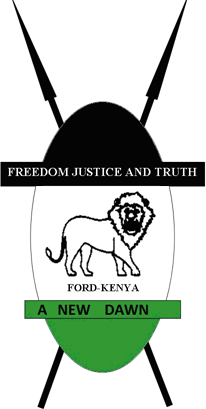
Forum for the Restoration of Democracy–Kenya (FORD–Kenya) is a Kenyan political party. The party has sat in the government of Kenya once, under the National Rainbow Coalition, from 2003 to 2007, having ended forty years of one party rule. In April 2022, the party joined the Kenya Kwanza coalition for the August 2022 elections, and is headed by Moses Wetangula, the current speaker of the National Assembly of Kenya. The party tends to be more popular among the Luhya people.
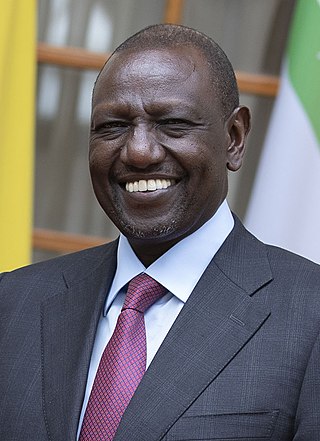
William Kipchirchir Samoei Arap Ruto is a Kenyan politician who is the fifth and current president of Kenya since 13 September 2022. Prior to becoming president, he served as the first elected deputy president of Kenya from 2013 to 2022. Previously, holders of the position were referred to as Vice President and the officeholder was unelected and appointed by the President. He previously served in three cabinet portfolios as the Minister for Home Affairs, the Minister of Agriculture and as Minister for Higher Education.

Wycliffe Musalia Mudavadi is a Kenyan politician and land economist who is currently serving as Prime Cabinet Secretary of Kenya and expanded role of Foreign & Diaspora Affairs Minister of Kenya, he is also the party leader of the Amani National Congress (ANC), one of the founding political parties, of the Kenya Kwanza alliance. He served as the 7th Vice-President of Kenya in 2002 and Deputy Prime Minister (2008–2012), when he resigned to contest for the Presidency in the 2013 Kenyan general election and emerged third. He was the deputy party leader of the Orange Democratic Movement (ODM) (2005–2012) and Party Leader of the United Democratic Forum Party (UDF) from May 2012 to July 2015.

Raila Amolo Odinga is a Kenyan politician who served as the Prime Minister of Kenya from 2008 to 2013. He was the Member of Parliament (MP) for Langata Constituency from 1992 to 2013 and has been the Leader of Opposition in Kenya since 2013. He is the leader of Azimio la Umoja–One Kenya Coalition Party.
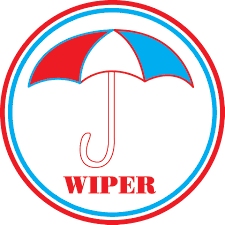
The Wiper Democratic Movement–Kenya (WDM-K), formerly Orange Democratic Movement–Kenya (ODM–Kenya), is a political party in Kenya, which originated as a result of the 2005 Kenyan constitutional referendum. The party tends to be more popular among the Kamba people. It is headed by Kalonzo Musyoka, who ran for president in 2007 and served as the vice-president in the Grand Coalition of Mwai Kibaki and Raila Odinga. He is now a member of the main opposition Azimio La Umoja One Kenya Party.

General elections were held in Kenya on 27 December 2007. Voters elected the President, and members of the National Assembly. They coincided with the 2007 Kenyan local elections.
The 9th Parliament of the Republic of Kenya was opened by elected President Mwai Kibaki on February 18, 2003. It was the first time that the formerly-dominant Kenya African National Union of Daniel arap Moi was in the minority. The triumphant NARC, which dominated in the general elections of 2002 was in the majority, led by Kibaki.
The United Democratic Movement (UDM) is a political party that was founded in 1999 by politicians who were at the time considederd to be renegades from the then ruling party Kenya African National Union but was denied registration by the then head of state Daniel Toroitich Arap Moi and most of its then leaders went to other parties by the time of the 2002 general elections.

General elections were held in Kenya on 4 March 2013. Voters elected the President, members of the National Assembly and newly formed Senate. They were the first elections held under the new constitution, which was approved in a 2010 referendum, and were also the first run by the new Independent Electoral and Boundaries Commission (IEBC). They coincided with the 2013 Kenyan local elections.

The United Republican Party (URP) was a political party in Kenya.
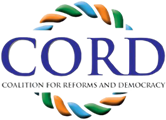
The Coalition for Reforms and Democracy (CORD) was a coalition of multiple political parties, built around the triumvirate of Raila Odinga, Kalonzo Musyoka, and Moses Wetangula, to contest the 2013 Kenyan general election. The members of the coalition are the Orange Democratic Movement, the Wiper Democratic Movement, FORD–Kenya, Kenya Social Congress, KADU–Asili, the Peoples Democratic Party, the Mkenya Solidarity Movement, Chama Cha Uzalendo, the Muungano Party, the United Democratic Movement, Chama Cha Mwananchi, and the Federal Party of Kenya Following the hotly-contested elections that saw the Jubilee Alliance win, CORD filed a petition contesting the results. The Supreme Court rejected CORD's petition and declared the Jubilee candidate Uhuru Kenyatta president-elect.

The National Alliance (TNA) was a political party in Kenya. It took on its current identity when Uhuru Kenyatta assumed control and renamed it as the vehicle for his 2012 presidential campaign.
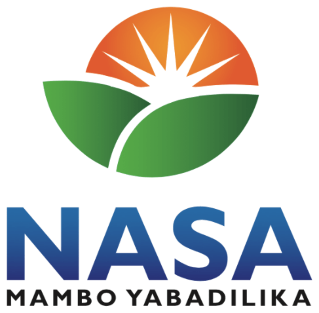
The National Super Alliance, known by the abbreviation NASA, was a Kenyan political coalition of opposition centre-left parties that was formed in January 2017. The coalition was created to oppose President Uhuru Kenyatta and Deputy President William Ruto in the 2017 general elections. Raila Odinga, Musalia Mudavadi, Kalonzo Musyoka, Moses Wetangula and Isaac Ruto were the co-principals of the coalition.

Azimio la Umoja–One Kenya Coalition Party, popularly referred as Azimio la Umoja, or simply Azimio, is a Kenyan political alliance and party headed by Raila Odinga. It is composed of the Orange Democratic Movement, the Jubilee Party, NARC–Kenya, KANU, and other parties. Former president Uhuru Kenyatta is the party's patron. The alliance fielded Odinga as its presidential candidate and Martha Karua as its deputy presidential candidate in the 2022 Kenyan election, which they lost.















